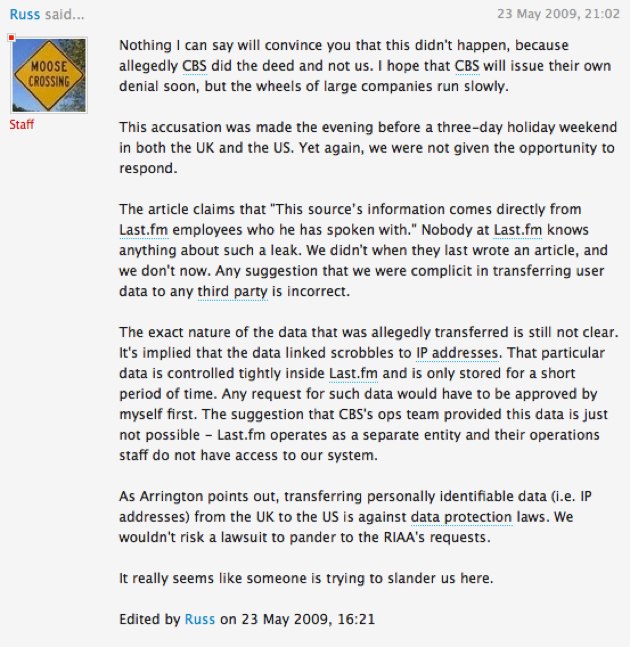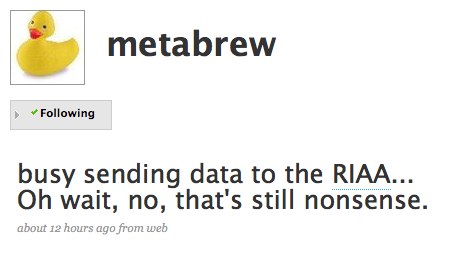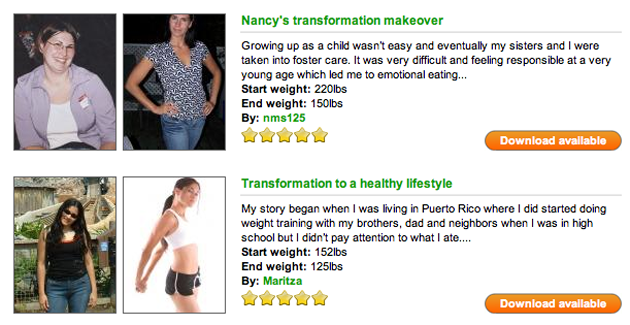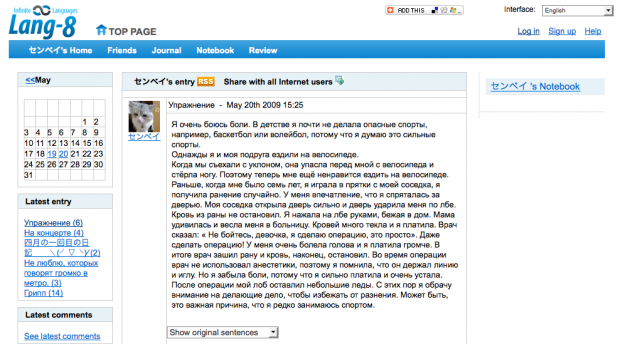The Latest from TechCrunch |  |
- Our First Taste Of Magma
- Free To Use. Pay To Play.
- Another Blanket Denial By Last.fm
- Got Biceps To Spare? Sell Your Secrets To Bodybuilding Success On ZodBod
- Six Small Conferences About Twitter, And Counting
- Infinity Ventures Summit Launch Pad in Japan (Part 2: The Best Of The Rest)
| Posted: 24 May 2009 12:33 AM PDT
Earlier this evening Baron included us in a small batch of new users invited to try out the site, and we’ve been testing it out for the last few hours. To be clear, this is by no means our final review of the site, as it is very much a work in progress and some of its most key features—which allow people to set up and follow real-time video feeds—haven’t been implemented yet. But even with some missing elements, at the very least, it’s clear that Magma is going to be a great place to kill some time. In his original post on Magma, Baron outlined three main use cases for the site. The first, and the one most people will be using Magma for, is as a comprehensive guide for what’s currently hot in web video. Open Magma’s homepage and you’re shown a grid of 10 “Must-watch” videos - clips that Magma has deemed to be the hottest on the web, as determined by data from sites like Digg, Reddit, and Twitter. Below this grid, you’ll get an at-a-glance guide to the most popular videos across a dozen different web services, which include everything from YouTube to CollegeHumor. Finally, the very bottom of the site lists some of the clips being shared by other users.
It’s a lot of content to absorb, with over 100 video links on the homepage alone. Fortunately Magma does a good job at laying out the video links so that they don’t become overwhelming. Magma certainly isn’t the first site to try to aggregate what’s hot in web video - in fact, many of its sources like YouTube and Digg also try to do exactly that. But Magma has done a great job taking all of these sources and presenting them in an easily consumable format, which could make it one of the first sites I visit when I’m looking to kill some time. That said, good design can be easily copied. Fortunately for the company Magma has some other core functionality in the works, but these other main features are still very much in the work-in-progress stage. Its stat tracking, which will allow you to watch in real-time as a clip’s hit count goes up and ‘buzz’ comes in from various social channels, is not yet active. And the social sharing features, which allow you to follow the videos shared by your friends, is still limited if only because there are currently so few people using the site. Magma’s power comes from the fact that it is a series of real-time, constantly updating video feeds. Each “channel” (YouTube, Digg, Tweetmeme, CollegHumor) changes frequently, with the latest videos pushing the rest down the queue. You can follow any channel like an RSS feed. You can also follow any other member’s collection of video streams. Magma starts with a collection of the most popular video streams and then encourages users to create their own. The number of potential video streams that can be created is virtually limitless. That is why Magma is exciting. Its main design principle centers around discovering and consuming videos via real-time streams. But these features will be ramping up over the next few weeks, and we’ll be following the site as it matures up to its public release. For the time being, Magma is looking promising - now it just needs to show that it’s more than just a nice looking content aggregator. Crunch Network: CrunchBoard because it’s time for you to find a new Job2.0 |
| Posted: 23 May 2009 07:02 PM PDT
While the advertising-based model is working for a select few, for most, it’s simply not proving to be a very good stand-alone model. Pandora is one of the companies that web-based advertising is actually working pretty well for. But even they’re not expecting to turn a profit until next year — and that’s based on projections. I bring them up because they recently decided to move forward with a freemium model in a serious way for the first time last week. As a large service with a rabid fan-base, this seems like a brilliant move. And I wonder if the time isn’t right for more services to try this? The freemium model is hardly a new idea. VC Fred Wilson has been talking about it since 2006 — though the name came a little later — but the model was around well before that also. The idea that you have a core set of features that are free to all users, and charge a fee to the smaller subset of users who will want more advanced features, makes a lot of sense. But now it’s easier than it has ever been for startups of all sizes to be able to take payments for such a structure, thanks to a number of companies and new platforms, like app stores. And there are plenty of startups popping up around this space to further help with this, like the soon-to-launch Contenture. But I think for the freemium model to work in today’s environment, it has be along the lines of the opening paragraph of Wilson’s post in 2006:
Rather than launching a service with a freemium model, I think it’s important to gain a large and passionate user-base first. That’s exactly why I think the model will work very well for Pandora. And that’s the same reason why it would work for Twitter, if it ever decides to go that route. Jason Calacanis has been talking about his desire to pay for premium features on Twitter since 2007. And plenty of others have since brought up the idea. As part of its bid to make money, Twitter is said to be launching premium tools by the end of this year. But that would apparently be for businesses — I think a lot of personal users would be just as willing to pay at this point. I know I would. And that got me thinking: What services would I pay for?
And here are some ones would I pay for:
Those are just the ones I would personally be willing to pay for. I’m sure everyone else will have their own list that they would pay for as well. And that’s why the freemium model is so great — it gives users the options to pay for only the services they use the most. And for certain really popular services, I think this could be huge. Pandora CTO Tom Conrad told me last week that he expects only 3-5% of Pandora’s users to sign up for its premium version, but I wouldn’t be surprised if it goes higher than that — especially if Pandora adds more features to the service over time.
Think about it this way: Before I was able to move away form the colossal rip-off that is Comcast cable, my cable bill was nearly $200 — a month! How people pay companies like Comcast over $2,000 a year for mediocre content and shit service is beyond me. I would rather pay a bunch of hard working start-ups (and yes some bigger services like YouTube — owned by Google — and Flickr — owned by Yahoo) all that money. And I wouldn’t even have to, under the rates I outlined above, I would be paying them just about 10% of that! The freemium model doesn’t always work. It didn’t for Pownce, for example. But to go back to what I said earlier, getting the users is they key to this. If you can get a ton of them, and get a certain percentage to be very loyal, they’re more than likely going to be willing to pay. And while it may not be enough for every company to only use that model, it at the very least would be a nice compliment to the ad-based model. And, as I hinted at above, there are other ways to look at this now. With the rise of mobile app stores, it’s becoming a decent business model to have a service that has a pay app. This has worked for the aforementioned Tweetie. An app can be a very simple advanced feature under this freemium model, and extends the possibilities for the model. But back to the web, just imagine if Facebook has a few percent of its users paying each year. They have over 200 million users, so say just 5% paid. That’s 10 million people paying, let’s say, $30 a year. That’s $300 million — or in other words, nearly its entire projected revenue for this year. If it were able to get 10% to pay, it’s be more than it’s projected revenue. Of course, Facebook isn’t likely to use that model, instead it will focus on micro-transactions and other means of making money — but still, it’s worth thinking about. There are quite a lot of services out there that I would pay to use, but they won’t let me. Maybe they should. [photo: flickr/striatic] Crunch Network: CrunchBase the free database of technology companies, people, and investors |
| Another Blanket Denial By Last.fm Posted: 23 May 2009 03:37 PM PDT
Last.fm cofounder Richard Jones, the author of the “TechCrunch are full of shit” post from February, also quipped “busy sending data to the RIAA… Oh wait, no, that’s still nonsense.” A careful read of the post turns up very little actual information. There’s indignation over the story, indignation over us not giving them a heads up, and a statement that it’s impossible for data to be sent to CBS without Garrett’s knowledge. They also say “Any suggestion that we were complicit in transferring user data to any third party is incorrect.” We need more than that. First, it’s correct that we didn’t talk to Last.fm or CBS before posting this story. Our efforts to do so in the past have been met with a brick wall. CEO Felix Miller has outright refused to have any direct conversation with us, instead pointing to Last.fm’s New York based PR group. We’ve been trying to have an off or on record conversation with him for months. But to the meat of our post and the story as told by our sources, we need direct answers. A blanket denial can easily be issued if even some small part of the story we reported is inaccurate or up for discussion. Given the seriousness of the story, we think its fair to ask Last.fm and CBS exactly what did happen: 1. Are they claiming that the initial story, including the email allegedly from a former CBS employee, was completely fabricated by our source? Was there no data request by CBS in February? If there was one, was data transmitted to CBS? Did CBS pass it on to the RIAA or one or more music labels? 2. You say “Any suggestion that we were complicit in transferring user data to any third party is incorrect.” Ok. How about a suggestion that you were innocently involved in transferring data to a third party, and subsequently outraged when you discovered what happened? 3. We believe Last.fm staffers have been agreeing with our story in private conversations for some time. Why the private agreement and the public broad denial? We have emails from Last.fm and CBS employees that are saying quite the opposite from what you are. 4. We believe Last.fm put in broad new data policies following our February story. If the original story was completely untrue, why did they put new data policies in place? 5. What is CBS’ position on this story? We all understand that Last.fm is upset and “rather pissed off.” But what we really want to know is exactly what happened in February. Was data requested? Was it supplied? Can CBS pull data directly from Last.fm without Last.fm’s involvement? We remain open to on or off record conversations with Last.fm, which has been our position throughout this story. The phones are ringing. They’re just not answering.
Crunch Network: CrunchBoard because it’s time for you to find a new Job2.0 |
| Got Biceps To Spare? Sell Your Secrets To Bodybuilding Success On ZodBod Posted: 23 May 2009 12:52 PM PDT Think you’ve found the ultimate fitness regime to attain the body of a Greek god? ZodBod, a new fitness startup that launched last month, wants to help you share your secrets to success - and possibly make some money in the process. The site invites users to write up and sell their own fitness guides, in which they can instruct visitors on diet and exercise regimes designed to whip them into shape. Guides on the site run around $5 each, and are an average of 20-25 pages long. Plans can include images, diagrams and tables detailing the exercises and meals guidelines you should be following. To decide which plans to follow, you can read through an extended bio of the author, browse reader reviews, and download a sample excerpt from the guide. My intitial reaction was that this seemed a little silly - after all, every guide (at least the ones that work) is going to be a variation on the old “diet and exercise” mantra. Then again, having seen the diet section at the local book store, it’s clear that people will pay for nearly anything that might somehow lead to some weight loss. And while there’s some risk of buying a wonky guide with no basis in reality, ZodBod claims that all guides are checked by a “health and fitness pro” prior to publication. I’m sure the site will wind up seeing more than its share of worthless diet fads, but presumably the real quality guides will bubble up to the top. And when it comes down to it, I’d rather take dieting tips from a real person (hopefully with a similar body type to mine) who has actually had to eat the foods they’re recommending instead of relying on the word of some famous bodybuilder who probably uses liposuction and steroids to maintain their physique. ZodBod is going to be fighting an uphill battle: it will be competing with countless other diet sites on the web, which include startups like WatchMEmelt and more established weight loss sites and forums, many of which are free. It’s also going to be facing off with self-publishing sites like Scribd, which just opened a new document marketplace last week.
Crunch Network: CrunchGear drool over the sexiest new gadgets and hardware. |
| Six Small Conferences About Twitter, And Counting Posted: 23 May 2009 11:30 AM PDT
It’s no surprise that Twitter, the current darling of social media and one of the fastest growing web sites, is now becoming the subject matter of entire conferences. There is a tremendous opportunity for businesses and brands to use Twitter to their advantage, including through customer support, brand management, advertising, job search and much more. But everybody is still trying to figure it out. Let’s have a conference! Twitter has yet to settle on a monetization strategy but is exploring different business models. Here are several conferences that are taking place in the near future (or have taken place recently) devoted to learning about all things Twitter. Do we really need so many Twitter conferences? 140/The Twitter Conference: Taking place in Mountain View, CA on May 26-27, this Twitter conference is bringing together developers, journalists, business executives, and others to discuss the business value of Twitter. Here’s a sampling of panel topics: Possible web services with the Twitter APIs, how organizations should be using Twitter, the branding opportunities of Twitter and more. Speakers include: Alex Payne, API Lead for Twitter; Anamitra Banerji, Product Manager for Twitter; and Loren Brichter, developer for Tweetie. Twitter Boot Camp: Tim O’Reilly is sponsoring a boot camp in mid-June in New York to teach businesses best practices on how to use Twitter to their advantage. Notable speakers include O’Reilly, Tony Hsieh, CEO of Zappos and Steve Rubel, senior vice president at Edelman Digital. TWTRCON SF 09: Taking place in San Francisco on May 31, TWTRCON focuses on discussing how to use Twitter as a business platform to reach and engage customers, influence opinions and activate markets. Speakers include Guy Kawasaki, Founders Fund’s Dave McClure and Twitter’s Anamitra Banerji. 140 Characters Conference: This conference organized by Jeff Pulver takes place in New York City from June 16 to 17. Participants will discuss Twitter’s disruption of social media and look at microblogging’s effect on celebrities, brands and advertising. John Borthwick, Fred Wilson, Tim O’Reilly (again), Tony Hsieh (again), Robert Scoble, Howard Lindzon, Steve Rubel (again) will all be on hand. (TechCrunch’s co-editor Erick Schoenfeld also will be speaking on a panel). Perkins Madrona Twitter Conference '09: Law firm Perkins Coie and VC firm Madrona Venture Group joined forces to sponsor a Twitter conference on May 15 in Seattle, WA. The conference was targeted, like the ones above, towards discussing how businesses can leverage the power of Twitter. Media140 Twitter Conference UK: This Twitter conference hails from our friends across the pond. Held on May 20, this conference brought together journalists, developers, and publishers to talk about how Twitter is effecting news. Topics included how Twitter will influence traditional local news sourcing and distribution and best practices of how to use Twitter in the news world. I’m sure there are other Twitter conferences out there, so be sure to note the gatherings you know about in comments. Crunch Network: CrunchGear drool over the sexiest new gadgets and hardware. |
| Infinity Ventures Summit Launch Pad in Japan (Part 2: The Best Of The Rest) Posted: 23 May 2009 10:06 AM PDT
Here is a quick rundown of the pitches delivered by the seven other companies (some of these were way more promising than the winners).
The game, which requires the installation of 3D plug-in Unity (and would be impossible to do under Flash or Shockwave), already saw about 1 milllion installs. This isn’t really surprising as a) it’s very cool and b) can be distributed via any web page out there. Here is a demo video.
Paradise Paintball 2.5 Preview from Shaun LelacheurSales on Vimeo. Paintica Nice mash-up idea, but it’s too early to predict if this will get any traction. Paintica is a project of Tokyo-based mobile web company Klab. Zeke CMS 4.0
Language learners can teach their mother tongues to each other by checking and correcting written blog entries. Ki says that his site attracted users from 165 different countries since launch in summer 2006 .
Jingoo MetaCast plans to launch Jingoo in English this July. Clearspring is one of the many other companies offering context-sensitive widgets. Firefox extension Deckkr (which made its debut at last year’s TC50 demopit) does similar stuff.
The IVS takes place twice a year, usually attracting a multinational crowd of 300 to 400 attendees. Tokyo-based VC company Infinity Venture Partners is planning to organize another of its invitation-only events this November. Crunch Network: CrunchBoard because it’s time for you to find a new Job2.0 |
| You are subscribed to email updates from TechCrunch To stop receiving these emails, you may unsubscribe now. | Email delivery powered by Google |
| Inbox too full? | |
| If you prefer to unsubscribe via postal mail, write to: TechCrunch, c/o Google, 20 W Kinzie, Chicago IL USA 60610 | |



 The tech world is an interesting one when it comes to companies making money. Some at the top like Microsoft, Apple and Google are raking in billions in profits every year. And each of those do it with different models: Microsoft through software, Apple through hardware and Google through advertising. But at the other end of the spectrum, most startups, even the very popular ones, haven’t yet figured out how to make money beyond their costs.
The tech world is an interesting one when it comes to companies making money. Some at the top like Microsoft, Apple and Google are raking in billions in profits every year. And each of those do it with different models: Microsoft through software, Apple through hardware and Google through advertising. But at the other end of the spectrum, most startups, even the very popular ones, haven’t yet figured out how to make money beyond their costs. I’ll start with the ones I already pay for:
I’ll start with the ones I already pay for: One of the keys to this in my mind is the yearly fee. While it might look nice to offer a service for $3-a-month, that recurring charge is ugly. I’d much rather pay a still low $36-a-year and not have to worry about it after that. And let’s add it up. Even if I paid for all of the services I listed above, depending on where the prices fall in the ranges I gave, it’s only $200 - $250 a year. That’s for 10 services, that I love and use every day.
One of the keys to this in my mind is the yearly fee. While it might look nice to offer a service for $3-a-month, that recurring charge is ugly. I’d much rather pay a still low $36-a-year and not have to worry about it after that. And let’s add it up. Even if I paid for all of the services I listed above, depending on where the prices fall in the ranges I gave, it’s only $200 - $250 a year. That’s for 10 services, that I love and use every day. Well, we
Well, we 





 The
The 


No comments:
Post a Comment